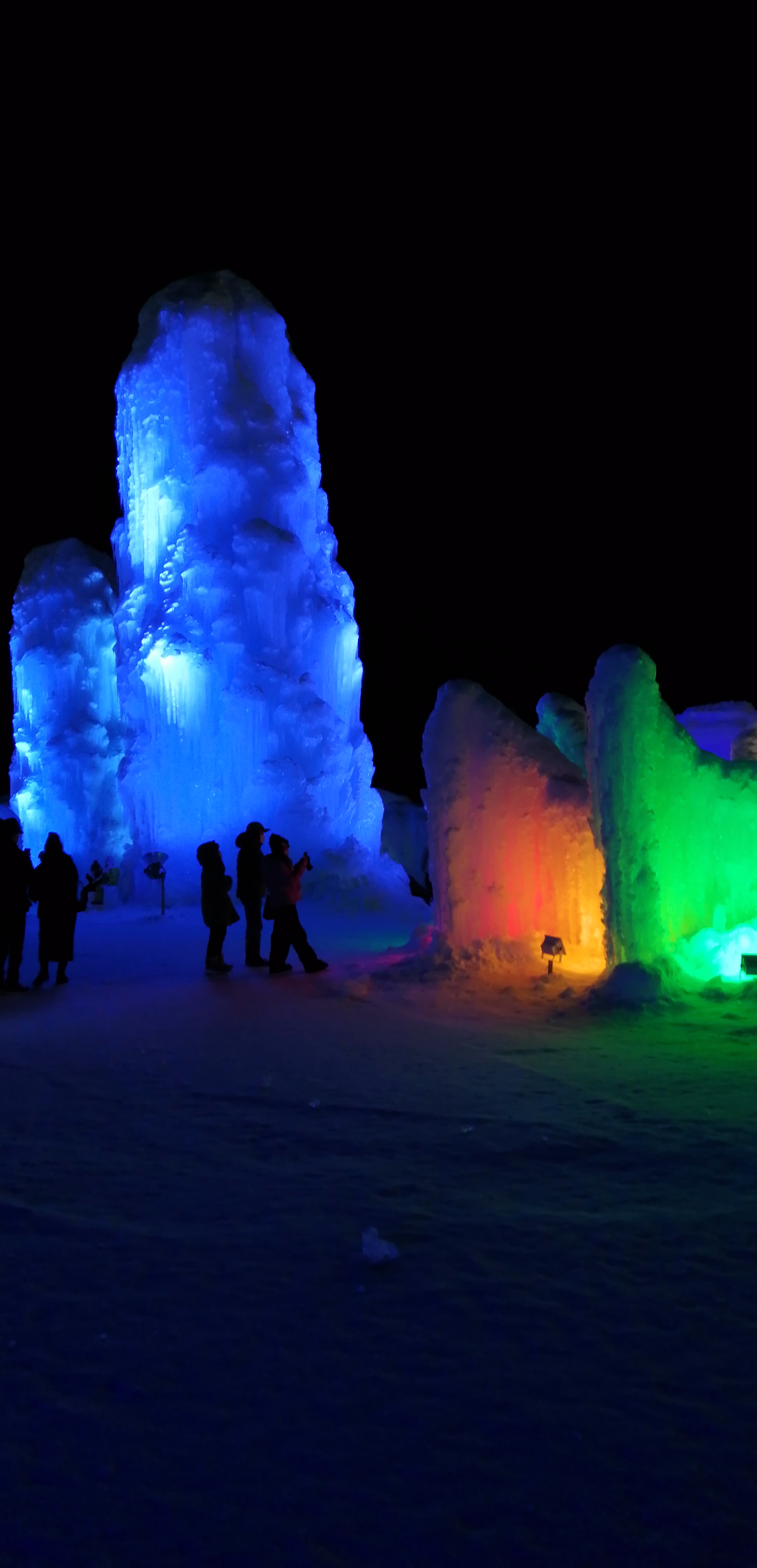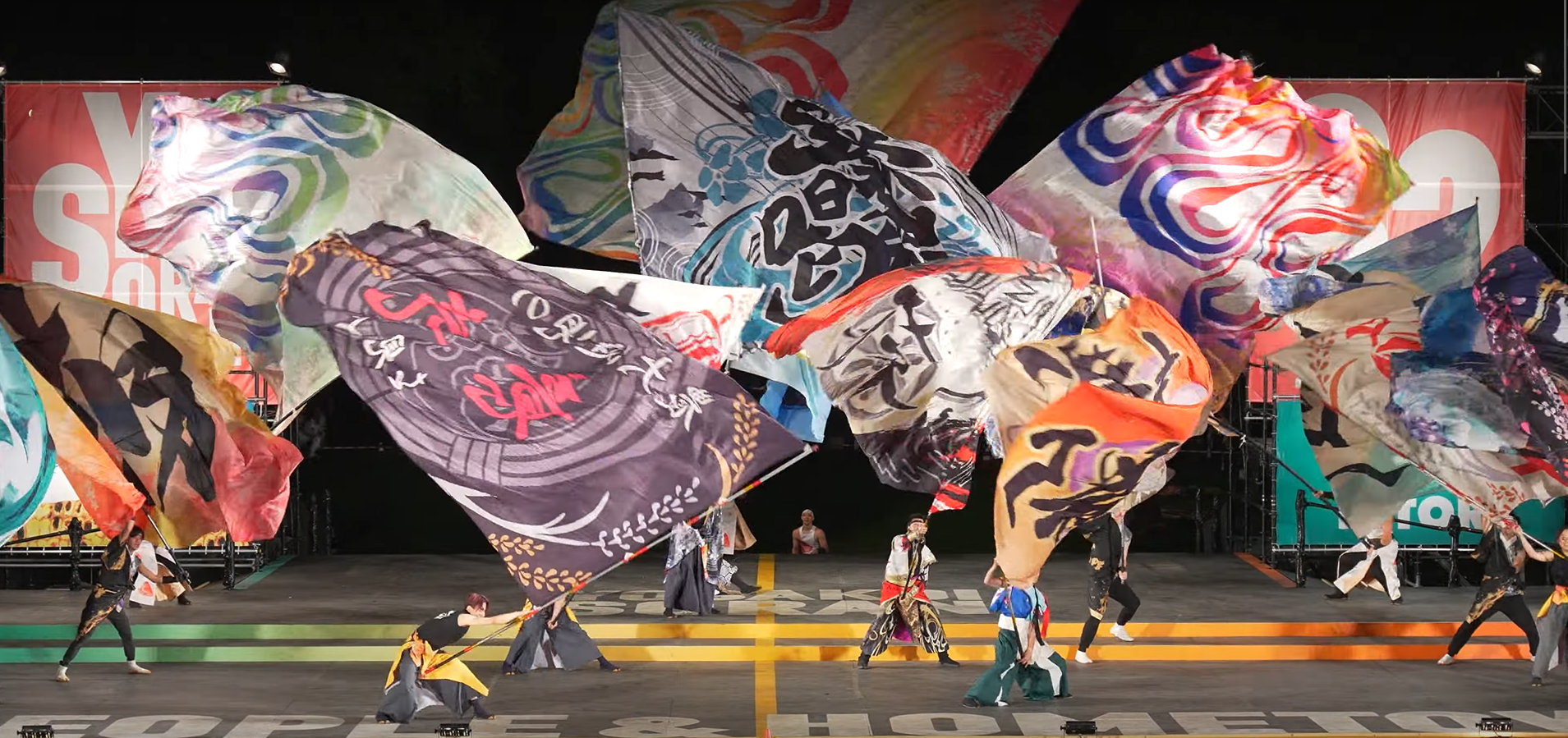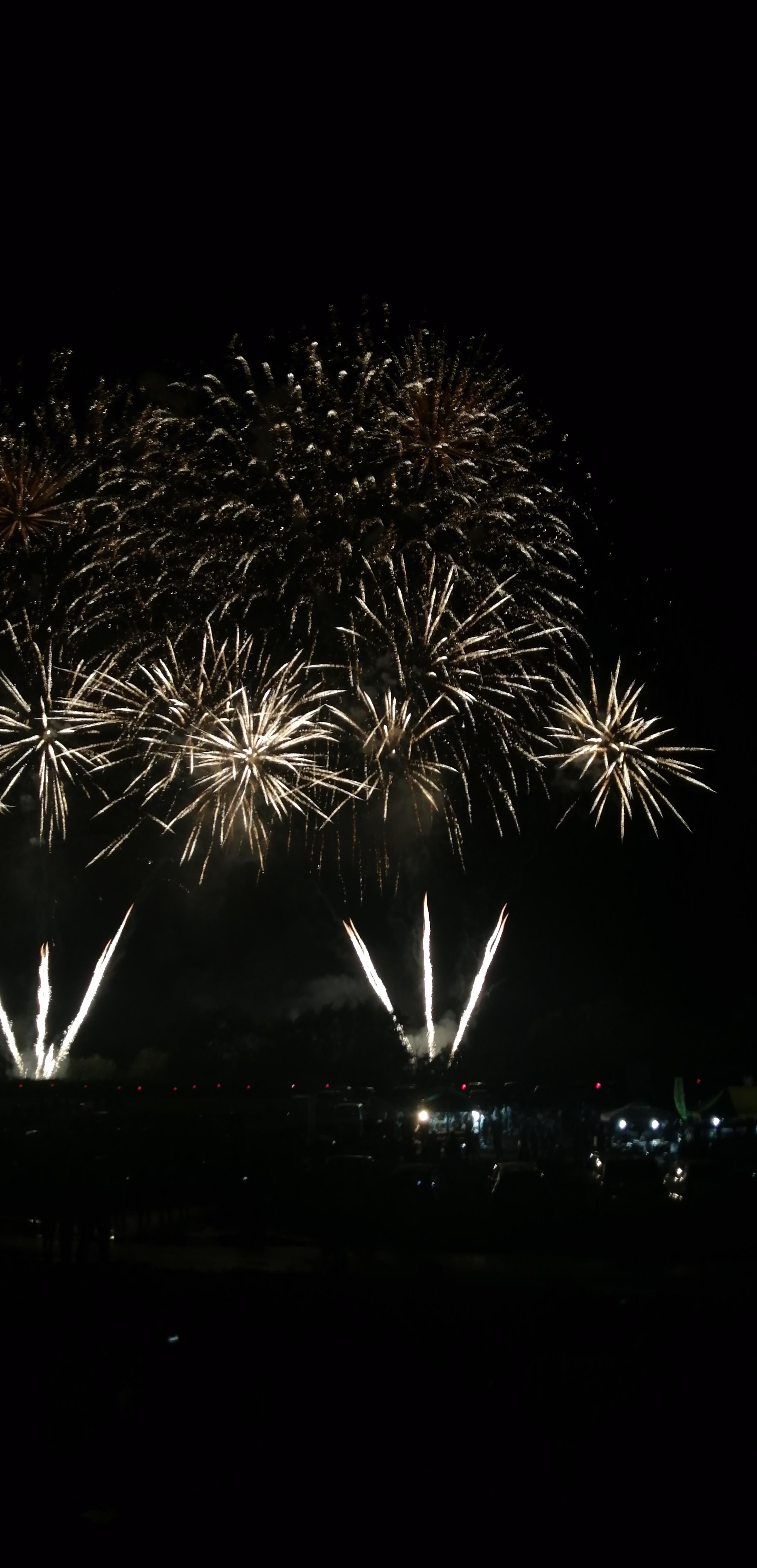This article originally appeared in the October 2023 issue of Connect.
Julia Hakes (Hokkaido)
As the largest prefecture in Japan, Hokkaido is constantly full of things to do. There are festivals and events happening all over the island, regardless of season and weather.
There’s always something going on if you just know where to look, and even just within my sub-prefecture of Sorachi I’ve never found myself with a free weekend that I didn’t want. Having that time to explore has given me the privilege to explore some of Hokkaido’s less-well-known festivals, which make for an interesting contrast compared to their more famous counterparts.
Sapporo’s Snow Festival is internationally renowned, and so it’s constantly bustling with visitors from out and abroad. But, though no one will explicitly tell you this, the large festivals aren’t the only ones that visitors from out of town are welcome to attend: While many of the smaller festivals around the prefecture are filled primarily with local attendees and those from neighbouring towns, they still enthusiastically welcome anyone that comes from farther away. Many a food vendor, upon noticing you aren’t Japanese, will try out their English in an attempt to coax you to taste whatever it is they may be selling. Hokkaido’s festivals, both big and small, exhibit some of the best characteristics of the prefecture and, thanks to the large number of farms in Hokkaido, often feature fresh food sourced nearby.
Sapporo Snow Festival[[https://www.snowfes.com/en/]]
[[i]]Early February[[i]]
Venue: Odori Park
Map[[https://goo.gl/maps/ih1ZKvZVuWcXZW6U6]]

Go a little ways south of the capital during wintertime and you will find the ever-popular Lake Shikotsu Ice Festival. A short distance from the lake, enormous towers and walkways of ice are erected. At night, they are lit with a fantastic array of colours, making the ice look as if it is glowing from within. Walking through and around the shining ice makes it seem as if you have stepped into another world, an effect amplified by the strange, synthesised soundtrack which echoes through the park during festival hours. The site is also dotted with impressive ice sculptures, in shapes such as pianos and rabbits. Visitors can even climb up on the top of the ice wall surrounding the festival grounds, and take an ice slide back down.
Lake Shikotsu Ice Festival[[https://hyoutou-special.asia/]]
January and February
Venue: Lake Shikotsu Visitor Centre Area
Map[[https://goo.gl/maps/NnqeS5eg6gVrcD2J7]]
But among all of Hokkaido’s many famous and grand winter festivals, my favourite takes place not in any of the large cities, but in Takikawa—a countryside city boasting a population of about forty thousand.

In February, Takikawa holds the Kamibukuro Lantern Festival. The weeks that lead up to the festival have people all across the city busily constructing their lanterns from paper bags. Some are made by children who draw pictures on the outer layers, some are made by companies that quickly print out designs to stick on, but the most eye-catching are the thousands of lanterns constructed by paper cutting. People across town painstakingly cut out elaborate shapes and patterns from paper bags, which become reminiscent of autumn jack-o-lanterns once lit.
On the day of the festival, a long section of a street stretching out from the station for many blocks is closed off, as well as a number of smaller sites off to the side, such as parking lots and temple grounds. Throughout the day volunteers work hard to set up twelve thousand paper bag lanterns, filling the bottom of each with just enough snow so that they aren’t at risk of blowing away, and then placing a tealight carefully on top. The snowfall in central Hokkaido is impressive, and the heaps of it on both sides of the road, as well as other scattered piles, provide a stage for many of the lanterns. Others are set up in elaborate patterns atop the road’s smooth surface of hard-packed snow. They form paths and shapes such as hearts, jellyfish, and stars. Some, arranged in elaborate snowflake patterns, stretch almost from one side of the street to the other.
Anyone that comes by during the day can make their own lanterns to add to the festivities. The city provides all the necessary materials, as well as volunteers to help guide anyone interested through the process. There are paper bags in all sorts of colours, stencils, markers, box cutters, cutting boards, and more.
When night falls all the lanterns are lit, filling the streets with a warm glow. From afar the swirling designs twinkle like fireworks brought down to the earth. The weather is cold, particularly once night falls, but visitors warm themselves near campfires and with hot, fresh food from the cluster of vendors set up just off of the main road.
Kamibukuro Lantern Festival[[https://www.lantern-takikawa.jp/]]
February
Venue: Takikawa Station Area
Map[[https://goo.gl/maps/f2MKyXeTFyMkguT88]]
After the snow melts away and the weather warms up, Sapporo’s Yosakoi Soran Festival comes, signalling the beginning of the summer festival season. It’s an excellent choice for anyone interested in dance, as yosakoi is a particularly high-energy and sensational style that’s a delight to watch. Teams gather from all over the country for the combination festival and competition. Although yosakoi may not be particularly well known outside of Japan, the Soran Festival is big enough that the number of expected international visitors warrants a web page with information in English.

For the greater part of a week, roads close down to accommodate flashy parades and parks all over the city are turned into stages. Participating dancers are easy to pick out by their costumes, often in bright colours and sometimes boasting ornate designs with many components. When participating in the parade, dancers will deliver successive performances while moving down the street, typically followed by a team truck, decorated to match their costumes and playing the music to which their movement is choreographed.
Despite the supposed competition, interactions between teams are high-spirited, and often competing teams seem more excited about performances than even the paying spectators. They greet each other, and any children that may come to say hello, with the same bright enthusiasm that they exude while performing.
Yosakoi Soran Festival[[https://www.yosakoi-soran.jp/en/]]
June
Venue: Odori Park
Map[[https://goo.gl/maps/ih1ZKvZVuWcXZW6U6]]
Many of the teams that perform at Sapporo’s Yosakoi Soran Festival also continue on to many other local festivals held around the island. Even small countryside teams may perform at five or more additional celebrations around the area that they’re based. If you missed a team that you wanted to see perform in Sapporo, you might have luck at one of the many countryside festivals.

These unassuming festivals usually have something unique to offer if you know where to look. In Sunagawa, a stage is set up in front of the lake at Oasis Park, and the bright colours of the setting sun reflected in the water cause the performances to look almost otherworldly. The fireworks show is carefully set up in such a way that it seems almost as if you could reach out and touch the bright bursts of colour. In Utashinai, famous for being the smallest city by population in all of Japan, the festival is held at the base of a mountain, making it almost feel as if the celebration is happening within a forest. Some of the groups that come to perform shine with such energy and enthusiasm that they manage to convince everyone to dance to unplanned songs, even under the oppressive summer heat. In Moseushi, a town of only three thousand people, the performers draw people from the crowd into the dances. They call people out by name to convince them to join in and encouragingly teach the dances to any kids that come forward.
Sunagawa Noryo Fireworks Festival[[https://www.city.sunagawa.hokkaido.jp/kankou/news/2023_0820.html]]
AugustVenue: Oasis Park
Map[[https://goo.gl/maps/Q9FdUunrPU8oaunA8]]
Utashinai Citizen’s Festival[[https://www.city.utashinai.hokkaido.jp/hotnews/detail/00000998.html]]
Early July
Venue: Utashinaishi Community CentreMap[[https://goo.gl/maps/8GA4YxnedXqKfTVm9]]
Moseushi Shrine Festival[[https://matsuri-no-hi.com/matsuri/24946]]
September 14-15
Venue: Moseushi Shrine
Map[[https://goo.gl/maps/5WzsFLATLSWJkS9Y8]]
In Akabira they hold a fire festival in the summer that proceeds regardless of the weather. In the late afternoon a large group begins to gather. People from around town and even from neighbouring towns all sign up to participate in carrying the torches. In groups they run through town, the women wearing t-shirts, shorts, and happi, and the men in only fundoshii. By the time that night has fallen, the runners begin to return to the festival grounds. The twinkling light of their torches makes them easy to pick out from afar.
After some fanfare and some speeches, a handful of the runners depart once more. This time, they leave to carry their torches all the way up a mountain. Back at the festival grounds, everyone eagerly waits for them to reach their destination. In the meantime, there is singing and dancing, taiko performances, and more types of food than any one person can eat. When the runners arrive at their destination, the festival grounds fill with excited gasps and exclamations: Up near the top of the mountain, the runners have set fire to blazing torches. In the distance the flames slowly spread until they form the kanji character for “fire”. For the remainder of the festivities the fire flickers up on the mountain, like a firework that doesn’t go out.
Akabira Fire Festival[[http://akabirakankoukyoukai.jp/event/himatsuri.html#himatsuri01]]
July
Venue: Akabira Community Square
Map[[https://goo.gl/maps/sERVtHfLXmyv2Xfe6]]
Hokkaido’s largest and most famous festivals are usually large and famous for a good reason. They may have stunning displays that simply require a budget impossible for smaller cities, or feature a near-endless number of booths, or invite well-known performers to provide entertainment. You can spend all day exploring the festival grounds and still not experience everything on offer.
At the same time, things that may initially seem like weaknesses of the smaller events can sometimes work to their advantage: They might have the festival-goers contribute to the displays, or have booths run by local restaurants with specialties unique to the town, or run traditional performances richly embedded with local history and culture. Going to these smaller festivals makes you feel more like a visitor than a tourist. They invite you to participate in the festival, contribute, and be part of it.
Hokkaido combines traditions from all over Japan in its festivities. Many of the people up here have family from all over the country, and so they bring with them the celebrations from all of these places. This blending of cultures offers a taste of everything from across the length and breadth of Japan, but always executed in its own unique Hokkaido style. If you’re looking for a way to sample that uniqueness, there’s few better places to get your dose than one of the island’s many spectacular festivals.
Julia Hakes is a second-year Canadian ALT living in Sunagawa and working at four elementary schools. She spends her time acquiring new hobbies when she isn’t busy dragging her friends to various events around Hokkaido. Recent additions include raising herbs indoors, sewing by hand, and console gaming.



![CONNECT ART ISSUE 2024 SUBMISSIONS [CLOSED]](http://connect.ajet.net/wp-content/uploads/2024/04/ARTISSUE-INSTA-600x500.png)




